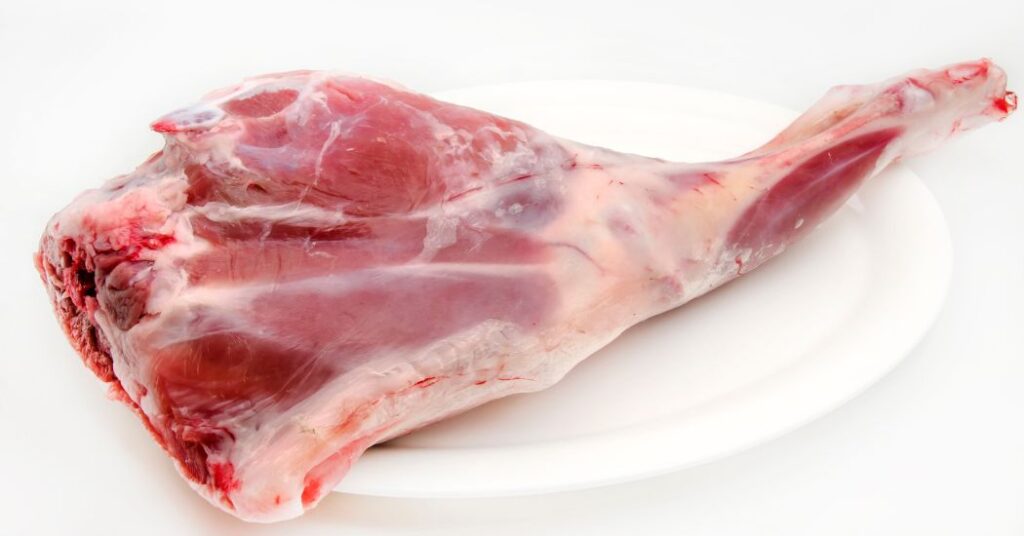How Much Does a Leg of Lamb Weigh? The Insider’s Guide
Planning a roast dinner? A lamb leg roast could be the star of your show. But there’s one key question: how much does a leg of lamb weigh? Your roast’s weight is crucial to calculate portions and cooking times, so you’ll need to get it right. Let’s unpack the mystery of lamb leg weight in this post.
All About Lamb Leg Sizes
The weight of a lamb leg varies depending on several factors, chiefly the animal’s size. Generally, the average leg of lamb weighs around 5 to 7 pounds. If you’re feeding a crowd, though, you can hunt down a bigger leg of lamb, which can weigh upwards of 10 pounds. Do remember, however, how much a leg of lamb weighs can also depend on the butcher’s cuts. If the bone’s been removed, you’re going to be buying less weight.
Choosing the Right Size
Now, how much does a leg of lamb weigh for the average dinner party? That depends on your guest list. A lamb leg weighing 5-6 pounds would suit a smaller gathering just fine. But if your invitees number more, you may want to go for a heftier lamb leg, one tipping the scales at 8 to 10 pounds.
Cooking Time isn’t About Weight Alone
A common misconception is that the weight of your lamb leg decides the cooking time. But the truth is, other factors like oven temperature, your desired level of doneness, and the meat’s thickness come into play too. So even if you’re clear on how much your leg of lamb weighs, you’d still need a meat thermometer to guarantee your roast is cooked to perfection.
Shrinkage: A Factor to Consider
Cooking a lamb leg means factoring in the meat’s shrinkage. As a general rule, expect about 25% loss in weight while cooking. So, if you’ve purchased a 6-pound lamb leg, you’d end up with roughly 4.5 pounds of roast on your dining table.
Boning Up on Lamb Leg Bones
It’s time to delve deeper into the realm of lamb leg weights. We can’t avoid discussing the influence of the bone when we’re talking about how much a leg of lamb weighs. Here’s why:
- The Bone-in Debate: A bone-in lamb leg will weigh more than a boneless one. So if you’re purchasing by weight, remember the bone’s contributing to that. However, cooking a bone-in leg can impart a deeper, more savory flavor.
- Boneless Benefits: If you prefer a boneless leg, the weight will be less, but the convenience might be worth it. Without the bone, carving becomes a breeze, and portion control is more manageable.
- Impact on Cooking Time: Whether or not the bone is present can affect the cooking time. Generally, a bone-in leg takes longer to cook, so consider this if you’re on a tight schedule.
- Marination Matters: Boneless legs are more accessible to marinate thoroughly, letting the flavors penetrate deep into the meat. So if you’re into heavy marinating, a boneless leg might be a better choice, despite weighing less.
- Cost Considerations: A bone-in leg will typically be cheaper per pound than a boneless one, so think about this if you’re budget-conscious.
- Availability and Preference: Finally, your choice might depend on what’s available at your local butcher and your personal preference. After all, cooking should be about enjoying the process and the result!
FAQs
❖ What part of the lamb is the leg?
The lamb leg is the hindquarters of the lamb, extending from the hip to the ankle. It’s a lean and tender cut, often used for roasting.
❖ How long should I marinate a lamb leg?
For best results, marinate a lamb leg for at least two hours, but ideally overnight in the refrigerator. This allows the flavors to penetrate deeply into the meat.
❖ What’s the best temperature for roasting a lamb leg?
Roasting a lamb leg is best done at a moderate temperature, around 325°F. This allows the lamb to cook evenly, retaining its juicy tenderness.
❖ Can I freeze a raw lamb leg?
Absolutely, you can freeze a raw lamb leg. Ensure it’s well-wrapped in airtight packaging to avoid freezer burn, and it can be stored for up to a year.
❖ How can I tell when my lamb leg roast is done?
The best way to determine if your lamb leg roast is done is by using a meat thermometer. The internal temperature should reach 145°F for medium-rare, and 160°F for medium.
